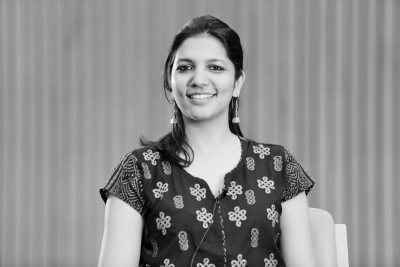 By Saket Suman
By Saket SumanNew Delhi, Oct 17 (IANS) Attacks against artistes are happening not just because of “the rise of any particular ideology over the last two-three decades”, nor is it a result of “one or two political parties exploiting communalism or religiosity”. Instead, according to Malvika Maheshwari, whose upcoming book “Art Attacks: Violence and Offence-Taking in India” presents a dismal picture of the turmoil that artistes are facing in the country, it is because of the complicated nature of democracy — where votes ratify power.
“To win and maintain this otherwise unattainable power, political parties over time began to exploit entire energies of their cadres and constituencies, first by persuasion, and, if not, by coercion. This capacity of democracy to both birth and nurture violence as a norm rather than as an exception not just placed severe limits on the imagination of the Constitution’s liberal project but its perversion provided for an entire infrastructure for ‘self-appointed gate-keepers of culture’ that helped them convince themselves and their publics of the value of these attacks,” Maheshwari, an Assistant Professor of political science at Ashoka University, told IANS in an interview.
Her book tells the story of violence against artistes in India, marked by the intensifying sense of insecurity, fear, frustration and anger within the art world. As opposed to simply adding to the prevalent commentaries on violent regulation of free speech in India, “Art Attacks: Violence and Offence-Taking in India” focuses on the dynamics of violence in that regulation.
Maheshwari, who was previously a research associate at the Centre for Policy Research here, said that such attacks are not just a phenomenon of the rise of “anti-liberal” sentiments as much as they are a phenomenon of the perversion of the liberal language.
“A lot of the attacks are justified and ‘performed’ by using statements of righteousness, not simply in the religious sense, even if they act in religion’s name, but rather through a morally-charged language of rights, respect, and justice, a language through which they hope to legitimise this violence. The attacks show how much this language has travelled, been copied and manipulated, for instance, through the tussle inherent in the arrangement and prioritisation of free speech over equal respect or dignity,” she added.
She stressed that there are individuals at the forefront of these attacks, those who “physically assault and vandalise”. She said that they come from “a particular social and economic class” and these attacks become a way for them “to resolve anxieties around status, recognition and respect”.
“It enables them to separate themselves from those of their own social group, but also distinguish themselves from their colleagues in their organisations, of which they are part themselves. Most importantly, these men are deeply informed by the glory and success that violent actions in the past may have brought to their leaders.
“So we need to understand that this form of collective violence is dependent on democracy’s rhetoric and processes, and even while being ‘anti-democratic’, they cannot be regarded simply as a deterrent to its routines. It needs also to be contextualised: Given that generally the outbursts of violence — public and private — in its many avatars have not so much been aberrations of India’s democracy as much as its very condition,” Maheshwari contended.
She added that in the last few decades, since these attacks have been on the rise, the context and the pattern of these attacks have undergone many changes. The violence of “offence-taking”, she said, is much more normalised today than it used to be.
Asked of her findings on the “rising culture of offence-taking in India”, Maheshwari shared four core aspects. She maintained that we have “a political culture that is deeply and seemingly irreversibly rooted in criminality, communalism and populism”.
She said that the phenomenon of “recurring attacks could not have found its ground without the expansion of electronic media, and its enhancement through private capital”. Maheshwari contended that it is “absolutely critical to focus on the micro politics of offence-taking and violence” — to understand how it becomes attractive for ordinary citizens, what for them are the motivations and risks involved.
“…very importantly, I do not see these attacks, vandalism and destruction of artworks necessarily as iconoclasm, underlined by its straightforward intention to forcefully and completely erase or annihilate. Most artworks and artists, after the attacks, acquire far greater visibility than before, often at the behest of the attackers themselves.
“What comes across very clearly in my interactions with them is that they see these attacks on art as investment, which inevitably leads to a generation of many more and new images and responses, offering many more opportunities of the kind and keeps the cycle going. As I mention in the book, censorship here is at the most a gratifying by-product, not a goal accomplished. Their interest lies not in what the artwork is about, but what the attacks can make happen,” she said.
To be published by Oxford University Press India in November, “Art Attacks: Violence and Offence-Taking in India” is a result of eight years of exhaustive research and writing.
(Saket Suman can be contacted at [email protected])
–IANS
ss/vm/tb/

